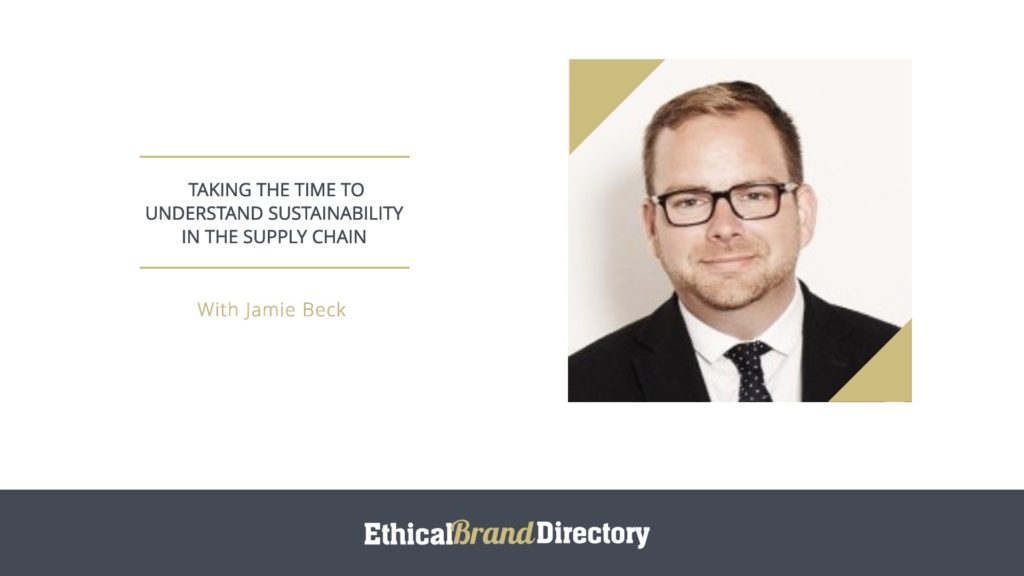Jamie Beck joined Ethical Brand Directory’s supporting small business webinar on 22nd April to share his expertise on sustainability within the supply chain. Jamie has had many years of experience working in supply chain management, therefore, had a lot of wisdom to share with us!
Sustainability in the Supply Chain
Jamie Beck is the founder and Director of JAKS SOLUTIONS, which is a Sustainability and Supply Chain Management Consultancy. Jamie has worked in the international retail and supply chains industry for 19 years, previously working with Arcadia Group, where he was ‘Head of Supplier Management’, overlooking all aspects of sustainability and supplier management. This involved managing over 600 suppliers and over 1000 factories in more than 50 countries.

Jamie discussed why brands should look to incorporate sustainability within their supply chain and the benefits that come along with it. He highlighted the first steps a business can take to begin incorporating sustainability into their supply chain and provided advice on how small businesses can do that who may have fewer resources and a smaller budget.
Supporting Small Business Webinar: Sustainability in the Supply Chain Key Takeaways
- To begin with clearly and concisely map out your supply chain, starting with a list and writing down all the processes and procedures that are involved along the chain.
- Create a basic 12 month strategy that includes your goals. These may change overtime as your business develops.
- Align business goals with the Sustainable Development Goals. This can be a great tool to monitor the kind of impact your business has.
Supporting Small Business Webinar: Sustainability in the Supply Chain Q&A
Q: What’s the best way to map out your supply chain for a SME?
A: I would suggest mapping out your supply chain as you know your business. Start with an excel spreadsheet, map each process of your supply chain down and the number of people it affects. For example, if you’re looking at a factory – how many workers are at that factory? Is the manufacturing of the product hazardous in any way? Risk assess each process to find out as much information as you can.
Q: How can there be more connectivity in the supply chain in relation to the farmers and the end consumer?
A: Larger companies are starting to put details on their websites or products. Some are even using QR codes on products where consumers can scan the code, which tells them exactly where their product came from, where it was grown, what country and who was the supplier etc. Smaller brands shouldn’t be afraid to share the stories of their supply chain, use images to show what you are doing and to get your message across or even direct quotes from the people down the supply chain themselves, such as the farmers.
Q: Can you give any examples of how to map out waste in the supply chain to incorporate circularity?
A: To begin with, start breaking down all the elements of waste to see where it comes from and what you can do with it. Consider how you can reuse that product. Keeping items in circulation is also always easier when a product is designed with circularity in mind from the start.
